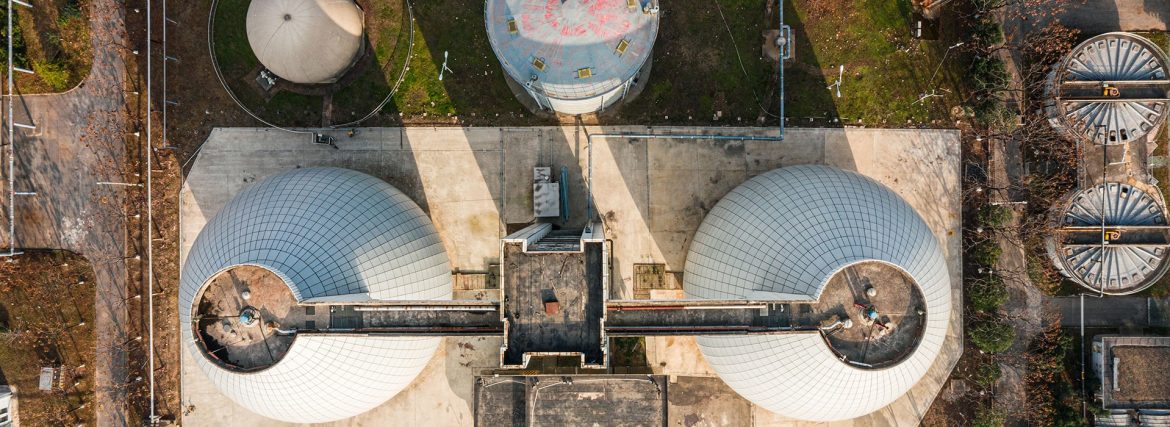Securing Our Water Future Through Strategic Action
Source: https://www.americancityandcounty.com/, Ryan Kushner, First Published June 28th, 2025
How utilities can overcome aging infrastructure, unfunded mandates and emerging contaminants.
Across the U.S., water utilities are standing at a critical junction. The convergence of aging infrastructure, rising regulatory demands and the persistent appearance of emerging contaminants are creating a perfect storm. Layered atop this challenge is a looming financial conundrum: utilities must comply with increasingly stringent mandates — many unfunded — while working within tight budgets, hesitant public sentiment on rate increases and some communities resistant to change.
Despite these hurdles, the path forward is not only possible, but also already being forged. With the right mix of strategic planning, technology adoption and public education, utilities can chart a course toward resilience, reliability and sustainability. A bold, incremental, proactive approach is now essential. As utilities contend with an evolving landscape, the most immediate and pressing force reshaping their priorities is the steady escalation of regulatory requirements and the evolving appearance of emerging contaminants.
The Regulatory Tide is Rising
At the heart of the issue are regulatory pressures that continue to expand in both scope and complexity. Federal laws like the Safe Drinking Water Act and Clean Water Act set the baseline, but states — especially in places like New Jersey — often implement even more rigorous standards in advance of the EPA regulations. Emerging contaminants, particularly per- and poly-fluoroalkyl substances (PFAS), reshape the water treatment landscape. Utilities are now required to identify these contaminants, obtain permits, design specialized treatment systems and integrate them into operations — frequently without preestablished operating procedures and with limited or conditional funding.
The stakes are high. Contaminants like PFNA are being addressed with cutting-edge methodologies such as ion exchange resins and granular activated carbon (GAC) — yet even these solutions require careful vetting. No two water sources are alike, and pilot testing using local water chemistry is essential. Naturally occurring compounds like ammonia, iron, and magnesium and pH levels can dramatically influence treatment outcomes. That’s why utilities are turning to simulations and collaborations with manufacturers to fine-tune solutions before investing at scale.
These pilot programs are critical. They reflect an urgent reality: utilities must ensure no degradation in water quality and operational stability as regulations quickly evolve. While navigating compliance challenges is daunting, they are compounded by another unavoidable reality: America’s water infrastructure is aging rapidly, and the cost of inaction is rising.
The Infrastructure Cliff
Beyond regulatory pressures lies the more profound challenge of aging infrastructure. Treatment plants, pumping stations, elevated tanks and — perhaps most invisibly but critically — miles of underground piping are reaching or exceeding their intended lifespans. Utilities often lack detailed records of system conditions, let alone the resources to conduct comprehensive replacements.
Here, prioritization is key. Replacing every pipe or pump is unrealistic. Instead, utilities must evaluate infrastructure based on condition, user impact, failure risk and environmental context. For instance, acidic soil, fluctuating pressures or recurring customer complaints may indicate hidden weaknesses in the system. Artificial intelligence (AI) and machine learning advancements are now accelerating this triage process. By analyzing system-wide data — soil type, pipe age, flow rates and more — AI tools can generate predictive models and provide a 10-year roadmap for improvements. These tools not only replace the retiring workforce’s institutional knowledge but also create a consistent, data-backed approach to decision-making. What was once an estimation process is becoming a science.
But even with a clear understanding of what needs to be fixed and in what order, the question remains: how can utilities afford to act when mandates grow and budgets shrink?
The Funding Gap — and the Unfunded Mandate Dilemma
Unfunded or partially funded mandates — such as the federal requirement to replace all applicable lead and galvanized service lines, depending on location, by 2037 — are putting enormous strain on local governments. For many small and mid-sized utilities that don’t qualify for funding, these costs are untenable. This financial stress leads to a critical tipping point. Without proactive investment, utilities fall into reactive cycles. Emergency repairs become the norm, and failures become more frequent. And the cost? Emergency repairs and response are often twice that of planned improvements, compounded by public dissatisfaction and staff burnout.
The only viable solution is multifaceted: identify every available source of funding — federal grants, low-interest state loans, infrastructure allocations — and use them strategically. Organizations serving smaller populations or disadvantaged communities may qualify for special programs and funding. Yet access isn’t guaranteed. Securing these funds requires experience with the various funding mechanisms and relentless advocacy. And even then, many utilities still face the hard truth: rate increases are unavoidable. The answer often leads to a difficult but necessary conversation that utilities and governing bodies can no longer afford to avoid: the need to revisit customer rate structures.
Breaking the Silence on Rate Increases
Elected officials and utility purveyors often struggle with how best to validate and communicate ratepayer increases. Many utilities have deferred minor, incremental adjustments for years only to find themselves forced into sudden, drastic hikes when systems begin to fail and require major improvements. The smarter path is gradual, data-backed change. Financial analyses incorporating Capital Improvement Plans, projected funding availability, and a risk matrix tied to infrastructure conditions can illustrate the actual cost of delaying projects. When governing bodies and the public understand that modest, phased increases can prevent system-wide failure, the conversation shifts from resistance to realism.
This is where communication becomes a cornerstone of success. Rate studies presented in public meetings, backed by clear graphics and explained in plain language, build trust. When customers understand the tradeoffs — pay a little more now or face higher rates and degraded service later — they’re more likely to support long-term investment. For some communities, however, the financial burden and community resistance to rate increases have opened the door to a growing alternative: selling the utility to private entities.
Privatization: A Tempting But Complicated Path
The strain on municipal utilities has led to a growing wave of privatization. In many regions, private firms are purchasing water systems outright, offering municipalities a lump sum to eliminate debt and offload the burden of infrastructure management. It’s an enticing offer, especially for towns that have exhausted bonding capabilities or failed to raise rates over time. However, while privatization may be the best option for some, privatization has other challenges: long-term rate control is shifted from the public to private and accountability may shift unless there is strong alignment between stakeholders.
The key is transparency. Whether exploring privatization or staying public, utilities must have financial projections, system assessments and honest evaluations of short- and long-term costs. With this clarity, leadership can decide whether selling or investing in the system is the best route forward. The right choice isn’t universal, but it should always be informed. Yet whether choosing to privatize or remain public, utilities must adopt a strategic mindset grounded in data, technology and transparent communication to build long-term resilience.
A Roadmap to Resilience
Despite the complexity, there is a clear path forward for utilities ready to act:
- Use data to drive decisions. AI and predictive analytics can replace guesswork with insight, providing an informed and defensible foundation for capital planning.
- Invest early and steadily. Prioritizing and funding critical infrastructure now saves exponentially in emergency costs and reduces future failures due to lack of preventative maintenance.
- Leverage every funding source. Proactive grant and loan applications are essential to close the gap between needs and resources.
- Communicate with transparency. When the needs are explained clearly and tied to tangible improvements, rate increases can gain broader acceptance.
- Evaluate all options — including privatization — with rigorous analysis. Every community is different. To protect the health, safety and welfare of the public, decisions must be grounded in facts, not fear.
The Cost of Delay is Too High
The future of America’s water infrastructure hinges on one truth: delay compounds risk. Regulatory demands will only intensify. Contaminants will continue to emerge. Infrastructure will keep aging. And the costs — financial, environmental, and human — will escalate. But with strategic foresight, modern tools and a willingness to face and make the hard conversations, utilities can turn the tide. They can maintain safe and reliable service and leave behind a system stronger than the one they inherited.
Securing our water future isn’t just about engineering. It’s about leadership, vision and the courage to strategically act.

